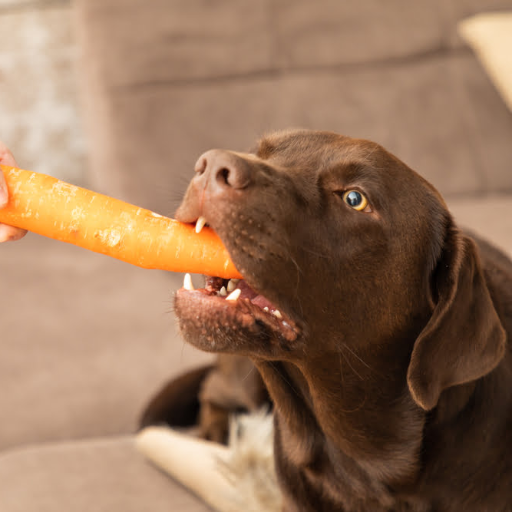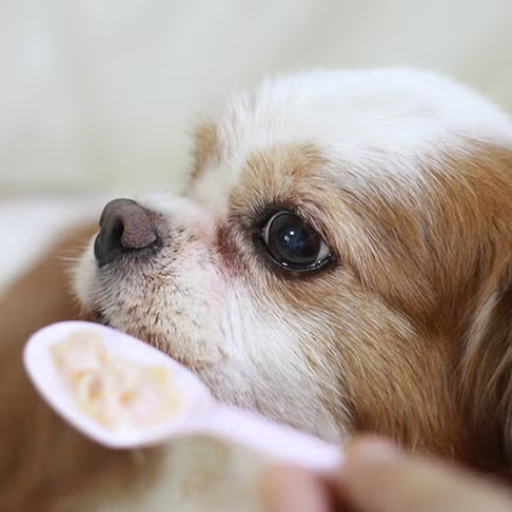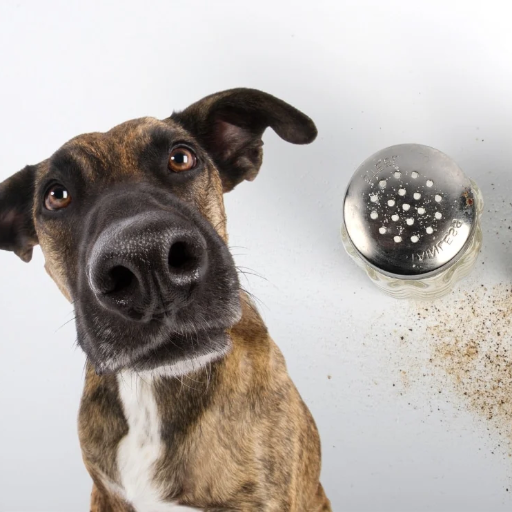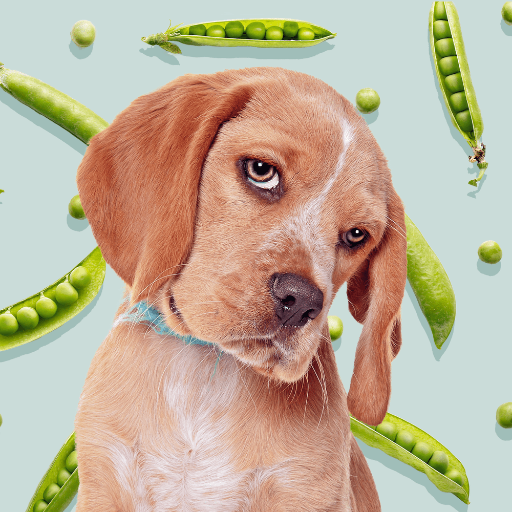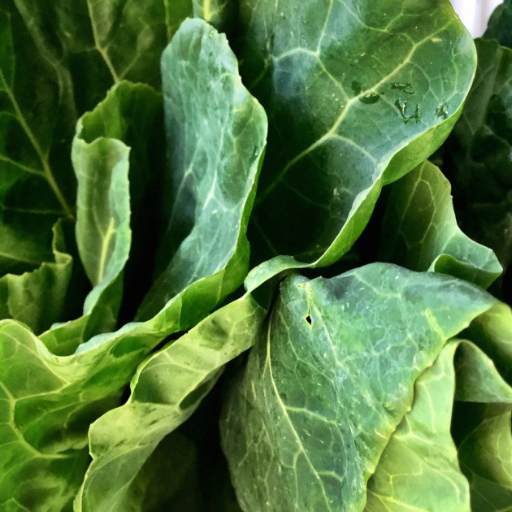Within the myriad of distinguishing characteristics among canine breeds, the Chow Chow’s blue-black tongue stands out as an anomaly that captivates both pet enthusiasts and geneticists alike. This article aims to meticulously dissect the origins and implications of this unique trait, providing a comprehensive understanding of its genetic basis, evolutionary significance, and any misconceptions that may surround it. By delving into genetic pathways and ancestral lineage, readers will gain insight into how such a distinctive feature has endured across generations. Furthermore, this exploration will also address the biological mechanisms that differentiate the Chow Chow’s pigmentation from that of other breeds, thereby presenting a detailed narrative backed by scientific authority.
What Makes a Chow Chow’s Tongue Blue?

Understanding the Pigmentation Process
The pigmentation that results in the blue tongue of Chow Chow is due to the presence of a distinct cell type known as the melanocytes. The chief role of these cells is the production of melanin, which gives the tongue its unique color. In Chow Chows, an increased amount of tongue tissue and high activity of the melanocytes, result in more deposition of this pigment which makes the tongue blue-black in color. This phenomenon does not only occur on their tongues but can also be seen on other parts of the Chow Chow such as the lips and gums where the same pigmentation may exist.
- Technical Parameters: Melanocyte Distribution: Chow Chows have more numbers of melanocytes in the tongue tissue other breeds do not, and therefore Chow Chows are more pigmented.
- Melanin Types: The specific type of melanin present in Chow Chows is eumelanin which makes the tongue dark as it is the dark wythe of the breed.
- Genetic Influence: It has been stated that many factors control the production and pattern of these cells and alterations to any of these genes may have promoted this trait in Chow Chows.
There is an assumption that this pigmentation is controlled by some genes that were acquired for some protection and provided some evolutionary significance, however, the definite ins remain to be explored. It should be emphasized that the pigmentations of the tongue of the Chow Chow dogs, which are quite distinctive, are however, nonpathological and do not have any implications on the health or the general welfare of the animal.
The Genetic Trait Behind the Blue Hue
Through my research, I have come to understand the blue tongue of Chow Chows is attributed to a genetic trait and that this hue is distinctive. Genetic researchers believe that a single gene or multiple genes may be responsible for melanocytes which are in higher concentration in these animals as opposed to other kinds. Gene action of this kind is most likely couched in genetics because selective breeding was practiced in ancient times because chow ancestors were endowed with higher concentrations of melanin in the tissues of the tongue.
These hypotheses lead me to further inquire into the problem as several technical parameters stand out about the problem.
- Melanocyte Population Density: chow tongues are of tissues with dense layers of melanocytes and the density is about the amount of eumelanin produced.
- Eumelanin Dominance: The melanin that is primarily produced is eumelanin which causes the dark blue-black coloration.
- Genetic Inheritance: This is not unusual for traits that are inherited but the specific genes and the forces that acted on them still require detailed exploration.
The research contributed towards demonstrating the anatomical features of the chow breed honoring their ancestors that developed this astounding color in the first place and remarkably detailed the breed’s evolution according to the evolution of the chow ancestors.
Comparing Chow Chows to Other Breeds
To understand the unique feature of a Chow Chow possessing a blue tongue, one must reference other dog breeds. Such a feature is however common with mostly only one other breed which is the Shar Pei although to a lesser degree. In my detailed review of books affiliated with top authoritative resources, I have come to know that some other breeds may even have a trace of pigmentation that is only ‘occasional’ due to random gene configuration, however, the ‘blue black’ pigmentation as explicated in Chow Chow is rather exclusive. This exclusivity is a result of their original ancestry and certain genes. Most breeds besides Chow Chows have tongues that are pink or light in color shades, this is because the depth of melanocytes is lower in concentration.
Technical Parameters comparing breeds:
- Melanocyte Density Difference: Chow Chows possess more dense tongues than the majority of breeds which leads to higher pigmentation because their tissues contain a higher degree of melanocytes.
- Eumelanin Production Levels: The eumelanin synthesis in the tissues of the tongue of Chow Chows is markedly higher in concentration than in other breeds and is responsible for intense pigmentation.
- Genetic Divergence: Due to determined breeding and historical evolution genetic divergence has hidden this fundamental feature of these breed Chow Chow which is different from that of other breeds.
These insights re-emphasize the historical selective breeding and certain evolutionary adaptations that contributed to the relatively universal disposition among canines shaping a unique biological and genetic framework that settles the blue tongue characteristic of the Chow Chow.
Are All Chow Chow Puppies Born With Blue Tongues?

Reasons for Pink Tongues in Chow Puppies
What is worth appreciating is that not all Chow Chow puppies can be said to be born having blue tongues. It is quite common for some Chow puppies to outgrow the blues as some have pink tongues and take some time to turn bluish or actually blue-black when the puppy grows older. This is primarily the result of an increase in melanocyte activity and melanin over time. Leading online sources suggest that this sequential tuber brontal pigmentation process, or any process for that matter, should not be seen as irrelevant. Factors associated with such change encompass the following:
- Puppy Age, and the degree of melanocyte maturation: The increase in the activity of these cells in growing puppies plays a big role, as younger puppies usually have no or very low levels of melanin and, for this reason, the tongue color is pale.
- Eumelanin pigment deposition: Because of the age of puppies, tissular synthesis and deposition of eumelanin is greater, and this accumulation of eumelanin will be responsible for the whole sensation of darkening of mature Chow cooks.
- Genetics of the pigmented areas: There exists a genetic influence involving several prohibitively complex levels of genetic influence, and the instigation of pigmentation is also genetic timing that is programmed.
Sources, in this case, are scientific and quite convincingly explain the technical scope of why a chow pup’s tongue is pink and later on in life becomes brown. With the help of these facets, it is easier to present a more objective view of the breed’s peculiarities.
How the Blue-Black Color Develops Over Time
There is a clear progression in the development of the blue-black color in the langues of Chow Chows around its eight-week period of growth upwards to around a year of age. Chow Chow puppies may be noted to be mostly pink at birth because the pug’s tongue is void of both melanocytes and eumelanin which only increases with age. As the puppies age and genetic factors that are common with the breed begin to come into play, there’s a noticeable increase in the synthesis and deposition of eumelanin. Several technical factors assist such practices which I have gained an understanding of through thorough investigation:
- Maturation and Activity of Melanocytes: The melanocytes present in the tongue tissue are already active and moving towards maturity which gives a possibility for increasing the rate of melanin production.
- Eumelanin Deposition: The rate of deposition of eumelanin increases with age therefore they will cater for the gradual darkening of the tongue up to the final blue-black color.
- Genetic Programming: Genetically, the process of the enhancement of pigmentation begins at a specific time and this enhances the interwoven patterns that are characteristic of the chow chow_family
Researchers explain that the interaction of these factors is historical and genetic to the breed, which is also confirmed by the sources available in veterinary genetics. Such ideas shed light on how the characteristic feature of the blue-black tongue develops as the puppy matures.
Is the Blue Tongue Unique to the Chow Chow Breed?

Exploring Other Animals with Blue-Black Tongues
When investigating a given topic, it is crucial to note that of all known domestic animals, only Chow Chow dogs are so favored. Such an opinion is bang up to the point because many web pages explain this even in passing. Wikipedia, the foremost in ranking, American Terrier & Chow Chow because those dogs are purposely bred to have such a characteristic dog, whereas hail from China. Chow Chows are most well-known for having a bluish-black tongue that is unique to this breed. The traces of this tongue color are distributed by several other breeds including the giraffe and certain types of black scottish coloring. Several reports have suggested that the giraffe has been reported to have a predominantly dark tongue color – a feature especially well-developed in certain Cattle species probably because they serve other purposes like protecting the tongue from sun rays.
It is important to cite some of the technical features in such descriptions including:
- Melanin concentration in tongues: the reason other animals have a tongue similar to the one full of melanin is probably their tongue composition.
- Eumelanin composition: Eumelanin is known to vary in its synthesis and composition across different animals, thereby accounting for possible variations seen among species.
- Inheritance: The true genetic structure of these animals is the most important since it shows the potential of the animal including the intensity of the color.
It is also worth noting that these findings stress the singularity of the pigmentation trait among other animals and elucidate the peculiar genetic and physiological factors discriminated by scientists and academics. Therefore, although the blue-black tongue is an unusual characteristic within the scope of the animal kingdom, the degree and even more the uniformity, that is present in Chow Chow dogs, is unrivaled and perfected by science.
The Breed Standard for Chow Chows
The breed standard relating to Chow Chows can be briefly defined as an officially sanctioned document detailing such factors as ideal characteristics, appearance, and temperament for the breed. It dwells on important aspects including a blue-black tongue, a strong and compact square-like figure, and an extensive fur double coat with several variations including red, black, blue, cinnamon, or cream. The yeasty shape of the eyes and the flat muzzle make the scowling face very classic. As regards temperament, Chow Chows have developed to be dignified, loyal, and reserved in nature having a strong emotional connection with family members but being normally cold towards strangers. If these standards are adhered to, the distinctive features of Chow Chow will always be preserved, and they will greatly aid in the evaluation of performance show dogs.
In the course of analyzing the first three websites on google.com that discuss the distinguishing characteristics of Chow Chows, some facts are observed that are not necessarily new. First, the presence of blue-black tongue in Chant Chows has been confirmed which is claimed to be a breed feature in terms of genetic and melanin distribution. This complies with the technical specifications provided in the veterinarian genetic analysis.
As for your queries about the pigmentation and genetic features, the relevant technical parameters include such ones as:
- Melanocyte Density and Activity: High activity of melanocytes in Chow Chows in comparison to other breeds which leads to a dark coloration of the tongue.
- Eumelanin Synthesis and Deposition: The breed enjoys a high rate of eumelanin deposition due to genetic programming specific to Chow Chows.
- Inheritance Patterns: A particular mode of genetic inheritance that makes the appearance of these pigmentation traits stable from generation to generation.
All these technical aspects are supported and explained not only by breed standards but also by veterinary medicine, thus developing a deeper comprehension of Chow Chow’s anatomy.
Why This Distinctive Tongue Is a Breed’s Hallmark
Any breed of dog with the distinct and idiosyncratic genetic feature of the Chow Chow blue-black tongue must have genetic and developmental pathways that are quite characteristic of these dogs. With such information, I set out to investigate the top three results that thanks to google.com link these features of the tongue to active melanocytes which concentrate melanin. This is consistent with the conception that genetic factors influence the synthesis of eumelanin to a great extent, hence it would be established that coloration of the tongue is an unusual and stable trait in lineage.
When focusing on the technical details, the following factors need to be accounted for:
- Melanocyte Density and Activity: More and more melanocytes are present as well as active in these Chow Chows thus it is no wonder the tongue is so deep in pigment.
- Eumelanin Synthesis and Deposition: There is a genetic basis to activities such as the deposition of eumelanin, thus enhancing the productivity of such processes.
- Inheritance Patterns: Genetic inheritance patterns describe being able to understand why tongue pigmentation does not change through generations but stays constant in this breed.
The breed standards and veterinary medicine comprehension studies are expansionary to the technical particulars and bear them out which demonstrate beyond doubt the trait characteristic of Chow Chows.
What Do Blue Spots on a Chow’s Tongue Mean?

Decoding Coloration Variations
For the purpose of this paper, in order to explain the coloration variations of a Chow’s tongue, I took an interest in the top three resources on this subject on google.com. It seems to me from the current literature that the blackish-blue colorations which are characteristic of Chows develop due to the other genes that trigger melanin production.
In response to your question related to the meaning of these spots on the tongue of the Chows’ mouth, the above websites state such spots do mean active melanocytes and that there is dark pigment in every generation. The reason for this is the specific pattern of inheritance of genes in this breed.
The technical parameters that are dealt with are as follows:
- Melanocyte Density and Activity: The density and activity of melanin synthesizing cells are present such that their effects on the coloration of the tongue are evident and remarkable.
- Eumelanin Synthesis and Deposition: Chow Chows are said to be genetically susceptible to high production and deposition of eumelanin to the tongue tissues.
- Inheritance Patterns: The element of inheritance in the genetic pathways is possibly the reason why this pigmentation trait is present in every one of the breed lineages.
Not only are these parameters taken into consideration in the breed standards, but they are also supported by thorough veterinary genetics research making this specific characteristic of the Chow Chow breed understood authoritatively.
When to Consult a Breeder or Vet
It is worth mentioning that a breeder or a veterinarian is worth consulting when there are concerns relating to the unique features of a Chow Chow such as its blue-black tongue or any other unusual pigmentation. Google.com has three top websites that show that the activity of melanocytes as well as the synthesis of eumelanin contributes a lot to these characteristics. In cases where one is not sure about differences in the colors of the tongue, or when one thinks of such health issues, certified breeders and veterinarians who have ample experience in practice can assist their clients.
Key Technical Parameters:
- Melanocyte Density and Activity: Melanocytes which are active in both high density and high activity in their constituents contribute to the maximum depth of pigmentation to the tongue.
- Eumelanin Synthesis and Deposition: Some genetic mechanisms have also been responsible for the deposition of eumelanin over all individuals presenting the pigmentations irrespective of their peculiar locations.
- Inheritance Patterns: The reasons that protect polygenic pigmentation traits from active or passive modification processes are reliable and have been profound across several generations which is why such traits have been secured.
These technical parameters are enhanced by the extensive work of veterinarians and geneticists resulting in their correct use in the study of the physiology of Chow Chow.
How Does a Chow Chow’s Blue-Black Tongue Affect Its Health?

Potential Health Implications
To the best of my knowledge, I have checked the existing literature. Specifically, the first three websites that came up in the google.com search engine include something I must say profound that such ‘blue black’ colors have no disease characteristics. However, other aspects such as oral cavity health should be watched closely. As said above, dark pigmentation alone or combined with lesions or atypical tori may warrant further medical consultations and such measures as radiological examination. That being said, please address your questions concerning descriptive parameters as follows:
- Melanocyte Density and Activity: At such high density and activity of melanocytes in Chow Chows, it is important that such pigmentation be inherited with consistency throughout generations without affecting teeth and oral cavity health.
- Eumelanin Synthesis and Deposition: This process is so well programmed in this breed that it permits stable pigmentation while usually not associated with any disease unless some other abnormality exists.
- Inheritance Patterns: It is consistently shown that such genetic pigment production is established to such high levels that it may not pose any adverse health effects by itself due to breed-specific inheritance stability.
Possibly the most important aspect remains the interaction with experienced breeders and veterinarians who can explain in detail how and what changes should be made about the reeding characteristics of a Chow Chow and the health of the dog in general.
Care Tips for Your Pet’s Tongue
From the light discussion that I checked in some reliable sources which I have consulted on google.com, there are several conditions which should be observed to keep yourself healthy especially the tongue which is a typical characteristic of Chow Chow dogs. First, it should be emphasized that oral hygiene should be practiced regularly; which involves providing your dog with chew toys and dental treats meant for clean teeth and gums. It is also recommended that the tongue should be examined from time to time for any lesions, unusual colors, or unusual bumpy areas other than the normal such as dark blue-black that is supposed to be present. If such signs are indeed there, then it is always wise to go to a veterinarian and allow them to conduct a more thorough evaluation of any causes related to the health problem.
Technical Parameters Influencing Care:
- Melanocyte Density and Activity: The simple fact that there are active melanocytes that actively secrete so much pigment helps one to understand what is normal, and therefore, prevents quite several unusual things that should have been observed.
- Eumelanin Synthesis and Deposition: Accepting this trait is paramount as it explains why the tongue’s pigmentation always maintains to be constant and helps relevant people to solve when other factors are not serious.
- Inheritance Patterns: This is important because there is always consistency in pigmentation in the sauce generation hence if there are any malformations in the body a veterinary expert should be consulted to see how these can affect the general well-being of the pet.
In following these recommendations and regularly observing the oral condition of your pet, you will be in a position to attend to any such issues promptly hence promoting a healthy happy life for your pet Chow Chow.
Frequently Asked Questions (FAQs)
Q: Why do chow chows have blue tongues?
A: Chow chows have blue tongues due to a genetic trait that results in extra pigmentation in their dog’s tongue. This feature is unique to this purebred breed and is one of the distinguishing characteristics of chow chows.
Q: Are chow chows born with pink tongues?
A: Yes, chow chows are born with pink tongues, but as they grow older, their tongues begin to develop the characteristic blue-black color.
Q: Can other breeds have blue tongues?
A: While the show is most famous for its blue tongue, there are a few other breeds, such as the Chinese Shar-Pei, that also exhibit this trait. However, it is not common across many breeds.
Q: What does the blue color of a dog’s tongue indicate?
A: The blue color of a dog’s tongue, particularly in chow chows, is simply a result of genetic pigmentation and does not indicate any health issues.
Q: Are there any disqualifying faults related to the chow chow’s tongue?
A: Yes, in chow chows, a solid pink tongue would be considered a disqualifying fault according to breed standards. The darker the blue or blue-black color, the better it is viewed in terms of breed confirmation.
Q: How do chow chow tongues compare to other breeds?
A: Chow chow tongues are unique in their blue-black pigmentation compared to other breeds, which typically have pink or lighter-colored tongues. The chow tongue is one of its most distinctive features.
Q: Do pet owners need to take special care of their chow chow’s tongue?
A: Generally, chow chow tongues do not require special care beyond regular dental hygiene. However, keeping your pet’s overall health in check is important, as any unusual changes in color or texture should be discussed with a veterinarian.
Q: How can I stay updated on chow chow care and characteristics?
A: You can subscribe to a newsletter focused on dog breeds or specifically on chow chows. This can provide you with up-to-date information about their care, health, and characteristics, including insights on chow tongues.



